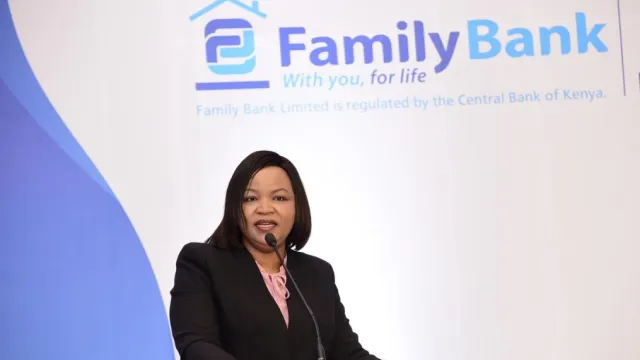Family Bank rides loan uptake to Sh1.05Bn in Q1 net profit

Family Bank CEO Nancy Njau.
Family Bank Group has reported a 15.4 percent increase in net earnings to KES1.05 billion for the first three months of this year, attributable to growth in interest income and cost management initiatives.
During the quarter, the lender said total assets increased by 19.2 percent to KES174 billion, driven by a 10.1 percent growth in the loan book which stood at KES96.2 billion and a 3.3 percent increase in investment in Government securities.
Family Bank CEO Nancy Njau credited the strong performance to the bank’s commitment to building on the achievements of the previous strategy which ended in the year 2024 while at the same time responding to the evolving needs of our customers.
“This is the first quarter of our new strategic plan, and these results are a reflection of our strategic clarity and the strong relationships we continue to build with our customers,” she said.
“Our new 2025–2029 strategy prioritizes innovation, digital transformation, customer-centricity, data-driven decision-making, and sustainable growth. We are positioning Family Bank as the Preferred Bank for Biashara, an approach anchored in a refined segmentation strategy, with a strong focus on the retail and SME sectors,” she explained.
During the quarter, net interest income surged by 32.6 percent to KES3.2 billion driven by a 50.6 percent growth in interest income on Government securities and a 14.1 percent increase in interest income on loans.
At the same time, total non-funded income went up by 32.1 percent supported by increase in number of customers’ transactions, improved digital offering and increased products uptake, the bank said.
During this period over 90 percent of our transactions came through digital channels, Family Bank stated.
Customer deposits grew by 19.8 percent to KES132.3 billion, supported by the Bank’s branch optimization strategy alongside continued investments in digitization and customer experience.
However, operating expenses increased by 41.5 percent, primarily driven by a 59.6 percent jump in loan loss provisions and moderate growth of 10.9 percent in staff costs on account of expanding branch network and employee training.
Core capital stood at KES15.9 billion, up from KES14.0 billion while core capital ratio stood well above regulatory thresholds at13.22 percent, signaling strong capital adequacy in light of the progressive core capital requirements.




